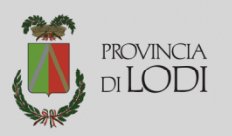From Carcassonne to Foix, walking across the calcareous plateaux of the corbieres
256,5 KM 13 days
The walk goes on once again among vineyards, through the chalky uplands of the Corbières, sun-drenched, dry lands. The landscape, however, changes continuously; among shaded forest tracks and country routes snaking on the high uplands, the mountain breeze blows from the Pyrenees, which are so close now that their snowy peaks can be seen. The way going from Carcassone to the first Pyrenean buttresses is full of memories linked to the numerous castles dominating valleys and villages from high unreachable crags. The signs and the effective promotion of the Aude department read “Catharist castles”; despite being one of the poorest in France, this department has been able to give value to its significant heritage and make it known to the world. There are many castles and almost all of them are accessible and interesting to visit. Visitors will not see much regarding the events related to the Catharist heretics and the crusade which was the beginning of their end, but it was above all the end of the Languedoc dukedoms’ independence, and the end of a glorious and prosperous period in which culture and language were very lively in this area. All the castles that can be seen along this route are the result of reconstructions following the crusade, when the kings of France invested money and energy in defending the border with Aragon. The charm of these ruins on the peaks of the Corbières is absolute, and they provide an opportunity to recall real history. As a matter of fact, the success of the signed tracks of the Sentier Cathare and the restoration of many forgotten castles, as the one of Peyrepertuse – maybe the most extraordinary one – have attracted crowds of tourists to the region in the last years, being fascinated by the Catharist heresy mystery and by various legends, more or less urban and more or less gloomy and violent, regarding the search of the lost Holy Grail. Unrelated to the XII and XIII century spirituality, to the tolerance and cultural openness animating the aristocratic courts of this corner of France. In addition to the historical and cultural reasons, going across this territory also means discovering valuable rural areas and their products: once again the marketing of the Aude department relies on the charm of Catharism. From the apple and grape juices to the excellent aoc «Corbières» wines, everything is marked as a product of the «Pays Cathare».
Stages:
43 – From Carcassonne to Monze
46 – From Termes to Duilhac-sous-Peyrepertuse
47 – From Dulhac-sous-Peyrepertuse to Camps-sur-L’Agly
48 – From Camps-sur-l’Agly to Bugarach

